"The Furniture" is our weekly series on Production Design. Here's Daniel Walber...
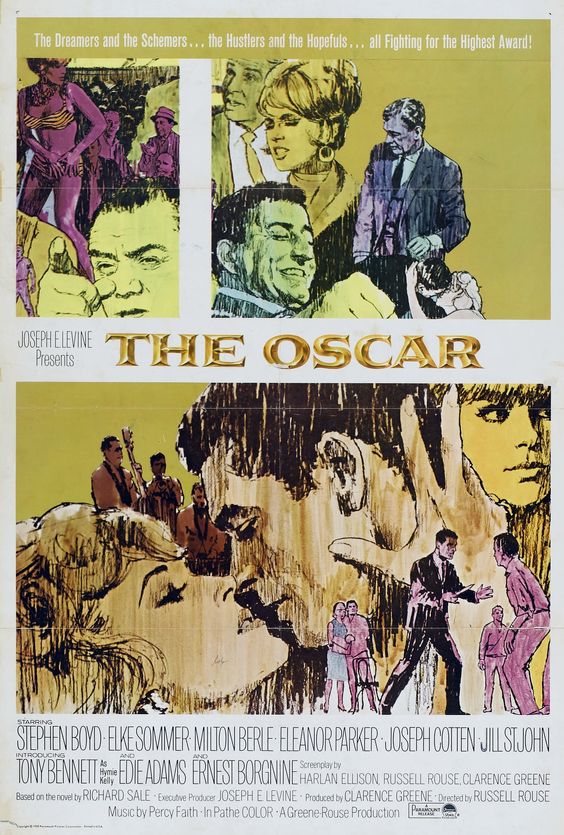 Tomorrow is twice blessed. You’re probably already excited for the first reason, the Oscar nominations announcement. It’s also the centennial of Ernest Borgnine, an actor I have never particularly liked. But this coincidence makes today a perfect opportunity to talk about one of the worst movies ever produced by a Hollywood studio: 1966’s The Oscar.
Tomorrow is twice blessed. You’re probably already excited for the first reason, the Oscar nominations announcement. It’s also the centennial of Ernest Borgnine, an actor I have never particularly liked. But this coincidence makes today a perfect opportunity to talk about one of the worst movies ever produced by a Hollywood studio: 1966’s The Oscar.
The film begins and ends at the Academy Awards, where fictional Frankie Fane (Stephen Boyd) is as Best Actor nominee for Breakthrough, perhaps the most on-the-nose fictional title of all time. His newly estranged best friend Hymie Kelly (Tony Bennett, in his film debut), glares at him from the next row. Bennett would retire from acting immediately after The Oscar, for reasons that are obvious from the moment he starts talking...
His narration, easily one of the ten worst uses of voice-over in movie history, begins the long and ridiculous story of Fane’s meteoric rise from introducing his stripper girlfriend in small town nightclubs to Hollywood’s most glamorous night. I’ll skip the gory details, but suffice it to say that he sleeps and yells his way past Jill St. John, Elke Sommer and Eleanor Parker right to the top. Along the way is some truly terrible acting and even worse dialog.

So why bring it up? Well, for one thing, it inspired one of the best-ever SCTV parodies. But it also got two Oscar nominations. The first can be forgiven; who wouldn’t be tempted to recognize Edith Head for her cameo appearance? But the production design nomination is truly baffling, an honor bestowed upon some astonishingly tacky set decoration.
The work of art directors Arthur Lonergan and Hal Pereira and set decorators Robert Benton and James Payne is frenzied and confusing. They have somehow managed to issue forth a withering critique of Fane’s craven aspirations, while simultaneously falling prey to the same flagrant impulse. Every space is overstuffed with decoration, some of which makes very little sense. Why, for example, would Fane museum-caliber portrait of a dead aristocrat in his bedroom?
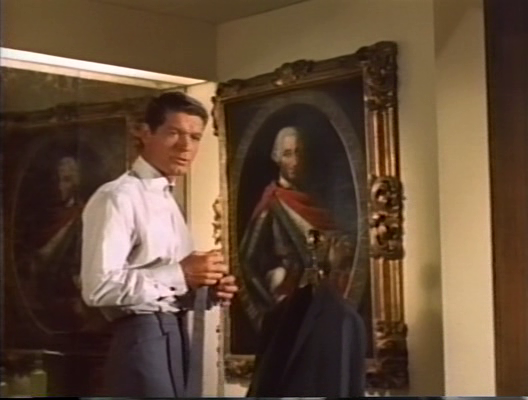
Here’s Elke Sommer in front of such a large display of expensively-framed objects that it more resembles Philadelphia’s Barnes Museum than anyone’s actual home. Compared to other ‘60s representations of conspicuous wealth, this is somehow both tone deaf and surrealist.
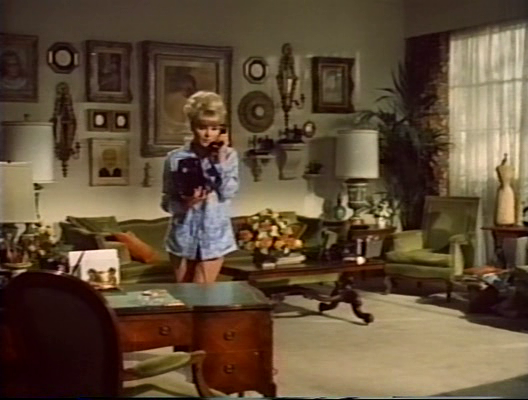
The same bizarre devotion is paid to classical sculpture. Starlet Cheryl Barker (Jean Hale) has a miniature garden in her foyer, complete with tastefully dressed nymph. If you look closely, there’s also another large portrait in the next room.
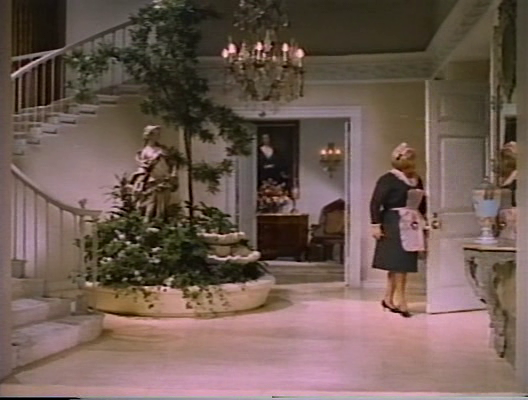
My favorite use of oversized decorative features, however, is narrowly less ornate. Reflecting the image of an actor in a mirror is a common cinematic technique, to be sure, but its grace tends to shatter when the mirror in question is comically huge.
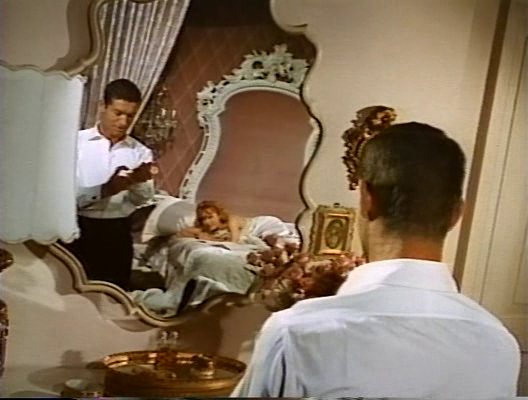
Here’s another one.
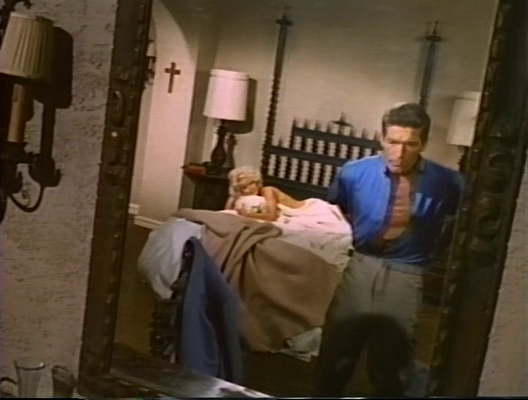
The opulent falseness isn’t restrained to domiciles, either. The Broadway play where Fane makes his first actorly impression looks like a ham-handed non-musical version of West Side Story, set in an apartment with no roof.
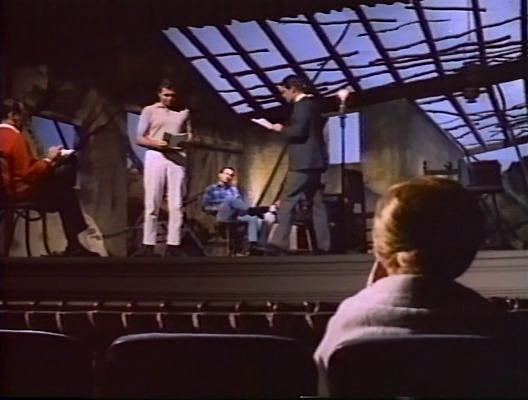
Every social gathering, from the Moulin Rouge-esque nightclubs of Hollywood to the beatnik gathering in the Village where the price of admission gets you unlimited spaghetti, feels fraudulent. Even the Oscar ceremony is weirdly minimalist, the stage decorated exclusively with chandeliers and pink curtains. Bob Hope and Merle Oberon emerge from the curtains as if transported by the magic of Fantasia, as there is no evidence of a backstage.
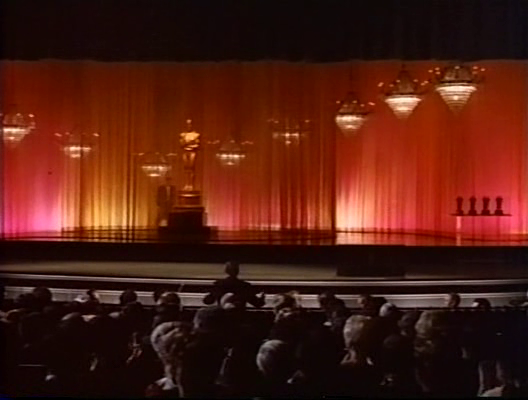
Speaking of pink, the piece de resistance is the home of Trina Yale (Edie Adams), the ex-wife of Ernest Borgnine, loud private detective. It’s the last new set and the best, a succinct representation of the film’s design ethos. Everything is pink that is conceivably available in pink, even the large framed portrait behind the couch. It is a triumph and a disaster all in one.
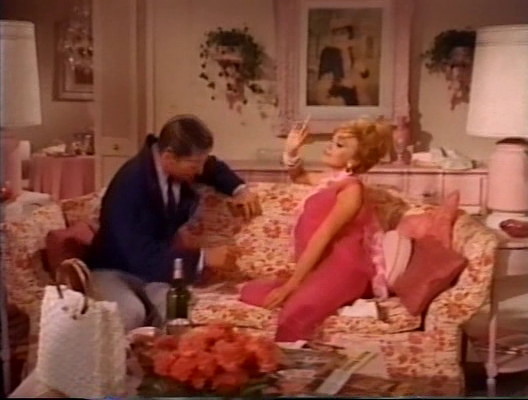
But wait! There’s also a lesson.
Tomorrow’s nomination announcement, like all nomination announcements, will have both pleasant surprises and frustrating omissions. There will be movies you miss and movies whose presence will drive you crazy. Don’t let it bother you. Remember that once upon a time, 50 years ago, the Academy nominated The Oscar. Nothing that happens tomorrow will be as bonkers as that.
